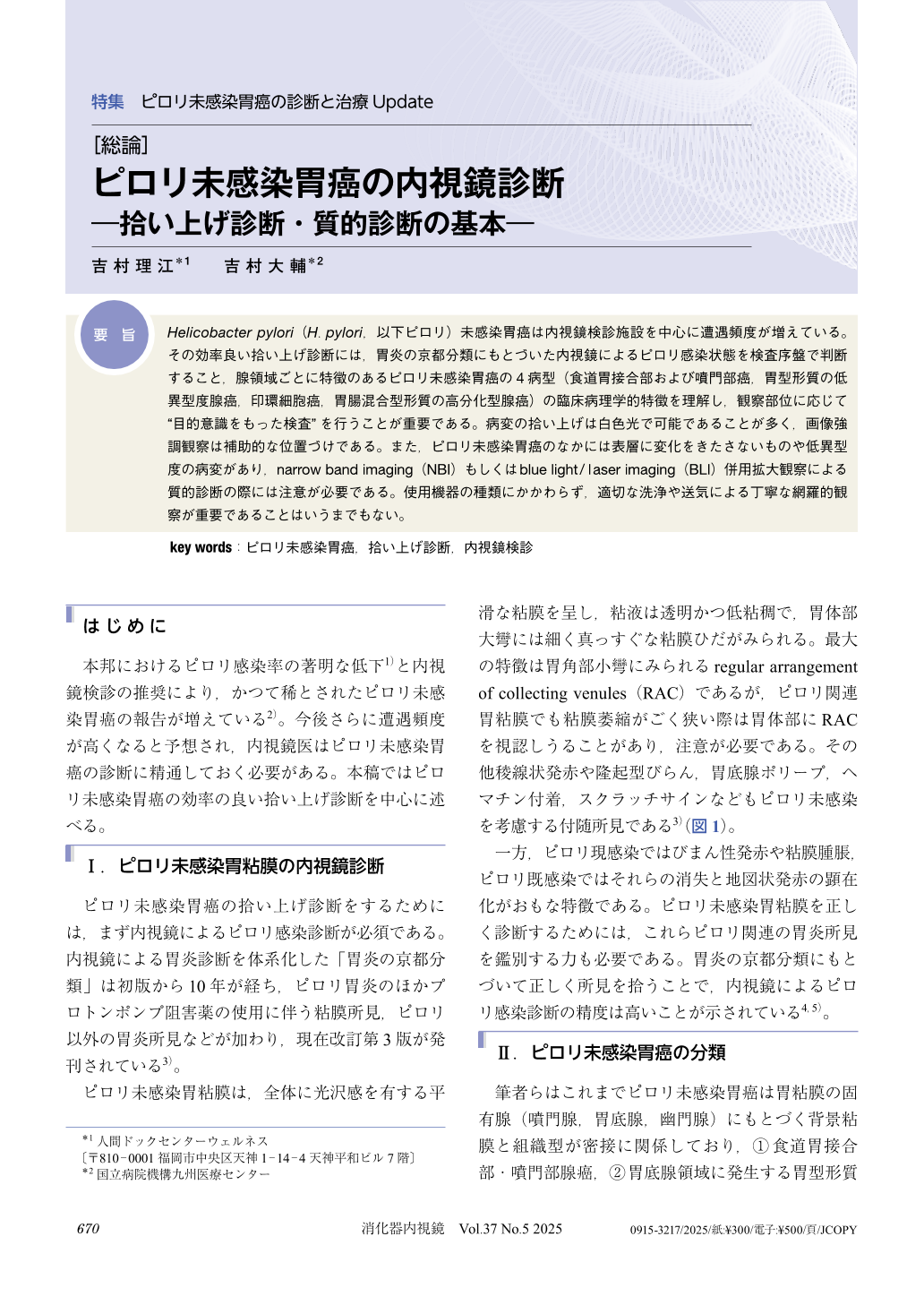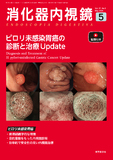Japanese
English
- 有料閲覧
- Abstract 文献概要
- 1ページ目 Look Inside
- 参考文献 Reference
要旨
Helicobacter pylori(H. pylori,以下ピロリ)未感染胃癌は内視鏡検診施設を中心に遭遇頻度が増えている。その効率良い拾い上げ診断には,胃炎の京都分類にもとづいた内視鏡によるピロリ感染状態を検査序盤で判断すること,腺領域ごとに特徴のあるピロリ未感染胃癌の4病型(食道胃接合部および噴門部癌,胃型形質の低異型度腺癌,印環細胞癌,胃腸混合型形質の高分化型腺癌)の臨床病理学的特徴を理解し,観察部位に応じて“目的意識をもった検査”を行うことが重要である。病変の拾い上げは白色光で可能であることが多く,画像強調観察は補助的な位置づけである。また,ピロリ未感染胃癌のなかには表層に変化をきたさないものや低異型度の病変があり,narrow band imaging(NBI)もしくはblue light/laser imaging(BLI)併用拡大観察による質的診断の際には注意が必要である。使用機器の種類にかかわらず,適切な洗浄や送気による丁寧な網羅的観察が重要であることはいうまでもない。
The frequency of Helicobacter pylori (H. pylori)-uninfected gastric cancer is increasing, especially in endoscopic examination facilities. The efficient endoscopic detection of H. pylori-uninfected gastric cancer requires the diagnosis of H. pylori infection status based on the Kyoto classification of gastritis in the early stages of examination. It is also important to understand the clinicopathologic characteristics of the four major types of H. pylori-uninfected gastric cancers (gastroesophageal junctional cancer or cardia cancer, very well differentiated adenocarcinoma of gastric type, signet-ring cell carcinoma, and well differentiated adenocarcinoma of intestinal/mixed type) and to perform targeted investigation focusing on each glandular region.
In most cases, white light imaging is sufficient for detecting lesions, and image-enhanced endoscopy can support detecting some lesions. Regardless of the type of instrument used, careful observation under appropriate cleaning and air supply is essential for efficient detection.

© tokyo-igakusha.co.jp. All right reserved.


